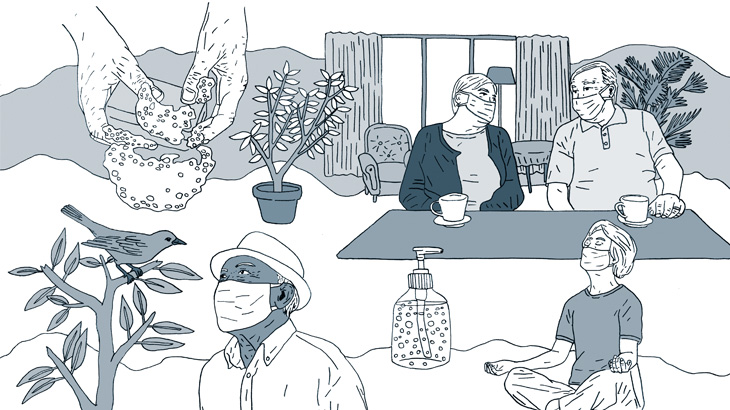Postado em
É possível definir o que sejam Instituições de Longa Permanência para Idosos (ILPI)?

Artigo: Ana Amélia Camarano
Resumo
A demanda por modalidades de residência e cuidados não familiares tende a crescer devido ao envelhecimento da população idosa e a redução da oferta de cuidadores familiares. A pandemia da covid-19 ao requerer o isolamento social deveria reduzir a demanda por essa modalidade de serviços, mas esta aumentou pelo aumento da pobreza, inclusive entre idosos. O artigo busca elementos para entender o que se considera por instituição de longa permanência no Brasil, através das suas origens. Anteriormente era voltada apenas para os velhos pobres. Atualmente, ampliou o seu público focando, também, nos velhos de outros grupos sociais, diferenciando-se das antigas instituições asilares. Pergunta-se por que só para velhos. Por que separar os velhos dos demais grupos etários, seja socialmente (retiro do trabalho) ou espacialmente (asilamento)? O distanciamento social é uma das medidas de prevenção que pode favorecer a contenção da infecção da covid-19, mas reforça o abandono e o isolamento. Isto ocorre pela interrupção das visitas de familiares, das atividades de lazer e religiosas, etc, o que pode ter implicações de diversas ordens para os residentes. Por exemplo, sensação de isolamento, abandono, insegurança, solidão e medo da morte. Reforça o sentimento de segregação. Isso requer repensar o modelo de Instituições de Longa Permanência para Idosos (ILPI).
Palavras-chave: ILPI; velhos; retiro; covid-19; cuidados.
Abstract
The demand for non-family forms of residence and care tends to grow due to the aging of the elderly population and the reduction in the supply of family caregivers. The covid-19 pandemic in requiring social isolation should reduce the demand for this service, but it has increased due to the rise in poverty among the elderly. The article seeks elements to understand what is considered a long-term institution in Brazil, through its origins. Previously it was aimed only at the old poor. Nowadays, it has expanded its target public, also focusing on the elderly from other social groups, differentiating itself from the old asylum institutions. One wonders why only for old people. Why separate old people from other groups, whether socially (retirement from work) or spatially (asylum)? Social distance is one of the preventive measures that can favour the containment of covid-19 infection, but it reinforces abandonment and isolation. This occurs due to the interruption of family visits, leisure and religious activities, etc., which can have different implications for residents. For example, feeling of isolation, abandonment, insecurity, loneliness and fear of death. It reinforces the feeling of segregation. This requires rethinking the model of longterm care facilities for the elderly.
Keywords: LTCF; elders; retirement; covid-19; care.
Baixe o artigo completo aqui.










